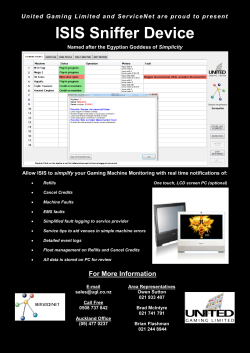
PG&E Response to Indicated Shippers Data Request IS_013-Q16
Proceeding: A.13-12-012 ALJ: Yip-Kikugawa Date: Exhibit No: PACIFIC GAS & ELECTRIC COMPANY GT&S Rate Case 2015 PG&E Response to Indicated Shippers Data Request IS_013-Q16 PACIFIC GAS AND ELECTRIC COMPANY Gas Transmission and Storage Rate Case 2015 Application 13-12-012 Data Response PG&E Data Request No.: PG&E File Name: Request Date: Date Sent: PG&E Witness: QUESTION lndicatedShippers 013-16 GTS-RateCase2015 DR lndicatedShiooers 013-016 September 18, 2014 Requester DR No.: 013 October 8, 2014 Requesting Party: Indicated Shiooers Bennie Barnes Requester: Evelyn Kahl/ John Mcintyre/ Dr. Jonathan Lesser, PhD/ Dr. Charles Feinstein, PhD 16 In PG&E Rebuttal Testimony, Page 4A-64, Lines 17-19, PG&E states that "Dr. Lesser misses the point that earthquake fault crossing studies could not really begin until PG&E had acquired a database of earthquake faults in 2008." (a) When did PG&E begin the compilation of its database? (b) Why did PG&E choose that particular time to commence the compilation of its data base? (c) Could PG&E have completed its database of eartt:iquake fault crossings prior to 2008? If not, please explain why not and the basis for the explanation. ANSWER 16 (a) As PG&E notes in the response to GTS-RateCase2015_DR_TURN_029-Q15, "By 2001, PG&E and the geosciences industry had gained enough usable data and knowledge to implement a seismic mitigation program on the gas transmission system similar to the program proposed in this 2015 GT&S Rate Case." However, it was in 2008 that PG&E began to develop this data into a useable database. Further, both PG&E and California United States Geological Survey (USGS) continue to learn about active faults and the database continues to grow. For example, as recently as the Napa earthquake (American Canyon), PG&E and the USGS learned of a newly active fault that was previously identified as inactive by USGS. (b) PG&E began that effort in 2008 because that is when the USGS in response to the Alquist Priolo Act had active earthquake fault data in an. electronic format that could be used by the industry to develop a database. As stated in (a), both the USGS and PG&E have continued to evolve knowledge about active faults and continue to learn of newly identified active faults. (c) PG&E did have and used partial data that was available from USGS earlier than 2008 as it continued to build towards a usable database in 2008. In fact, PG&E GTS-RateCase2015_DR_JndicatedShippers_013-Q16 Page 1 performed its first three fault crossing mitigation projects in 1994 and another eight between the beginning of 2001 and the end of 2009. GTS-RateCase2015_DR_lndicatedShippers_013-Q16 Page 2
© Copyright 2025





















